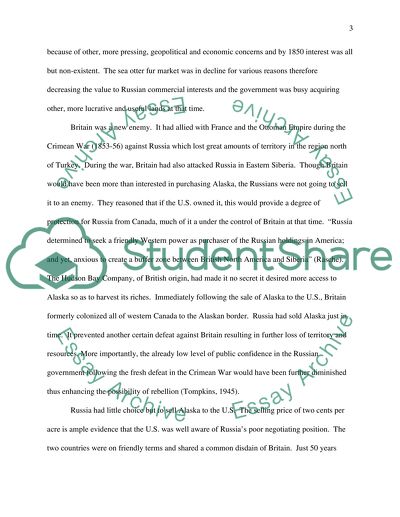Cite this document
(“The Purchase of Alaska Research Paper Example | Topics and Well Written Essays - 1500 words”, n.d.)
Retrieved from https://studentshare.org/family-consumer-science/1412748-the-purchase-of-alaska
Retrieved from https://studentshare.org/family-consumer-science/1412748-the-purchase-of-alaska
(The Purchase of Alaska Research Paper Example | Topics and Well Written Essays - 1500 Words)
https://studentshare.org/family-consumer-science/1412748-the-purchase-of-alaska.
https://studentshare.org/family-consumer-science/1412748-the-purchase-of-alaska.
“The Purchase of Alaska Research Paper Example | Topics and Well Written Essays - 1500 Words”, n.d. https://studentshare.org/family-consumer-science/1412748-the-purchase-of-alaska.


